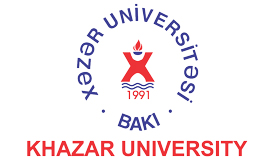International Conference on Materials Science and Research
November 16-18, 2017 Dubai, UAE
Solidification Control of High-Si Ductile Cast Irons
Politehnica University of Bucharest, Romania
The new generation ductile iron with up to 6.0% Si exhibits a fully ferritic matrix, which is solution strengthened by silicon. Outstanding advantages of these grades result in their strongly increasing demand, especially in the automotive industry. The strength of ferritic irons is improved or the instability of a mixed ferritic-pearlitic matrix could be replaced with more predictable and controllable ferritic grades. Because of the combination of a high strength and good elongation it is possible to decrease the wall thickness (light weight construction); the hardness and tensile strength is homogenous over the wall thickness. The machining cost is decreased. More than 4.0%Si enhances performance at elevated temperatures by stabilizing the ferritic matrix and forming a silicon-rich surface layer, which inhibits oxidation. Molybdenum additions up to 2%, to more than 3.5%Si, give superior mechanical properties at high temperatures and improved resistance to oxidation. More than 3.0%Si increases the corrosion resistance.
Experiments studied the solidification pattern of three ductile iron compositions [2.5%Si; 4%Si and 4%Si-1.6%Mo], by thermal analysis technique. Wedge samples having a different cooling modulus [ASTM A367] and rapidly graphite nodularity testing samples were also produced. Despite that silicon favours chunky graphite formation, effective inoculation decreased the sensitivity to form a dark coloured porous region in the thermal centre of Si-alloyed ductile iron and limited it in Si-Mo ductile irons. Alloying with silicon reduced the carbides sensitiveness for the entire solidification cooling rate range in both un-inoculated and inoculated irons. Without inoculation a supplementary Mo addition drastically decreased the beneficial effect of Si on undercooling. It was found that inoculation is important for high-Si but particularly so for Si-Mo alloyed irons, requiring a high efficiency inoculation procedure.
Biography:
Iulian Riposan is a Professor of Materials Science and Engineering in POLITEHNICA University of Bucharest, Romania; He published more than 300 scientific papers [published in 32 countries]; 35 Papers at American Foundry Society (AFS) / Ductile Iron Society Conferences; 22 Papers at World Foundry Congresses; 16 Papers at World Conferences on Cast Irons; 35 Romanian Patents; AFS International Member; Award of Romanian Science Academy; 2012 American Foundry Society Scientific Merit Award “for advancing the knowledge of the cast iron industry through extensive research and for generously sharing his knowledge and expertise with the industry”;BEST PAPER AWARDS: 63rd World Foundry Congress; 106th and 107thAmerican Foundry Society Congresses.



